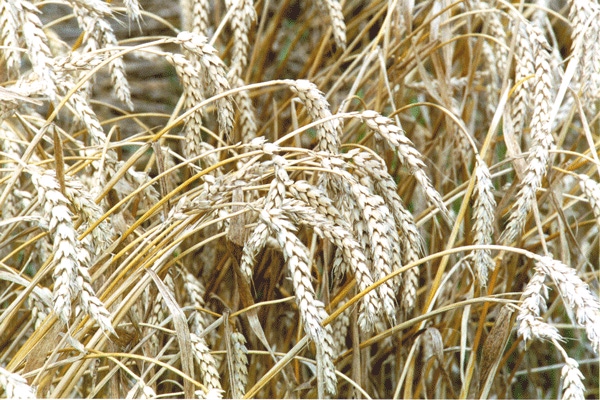
Big soft red winter wheat crop influences USDA predictions
• USDA lowered U.S. corn feed and residual use by 50 million bushels, partially due to increased prospects for 2011/12 SRW production.• The April WASDE noted that the weighted average of early April crop conditions in the SRW states (mainly east of the Mississippi River) shows the highest percent of SRW in good-to-excellent condition since 2006/07.
April 11, 2011

The U.S. Department of Agriculture (USDA) World Agricultural Supply and Demand Estimates (WASDE) report for April notes new influences in the global wheat market from a big jump in soft red winter (SRW) wheat plantings.
USDA lowered U.S. corn feed and residual use by 50 million bushels, partially due to increased prospects for 2011/12 SRW production. In its March 31 Prospective Plantings report, USDA indicated a 55 percent increase in SRW planted area compared to 2009/10, a marketing year when SRW harvested area was down about 30 percent below its five-year average.
The April WASDE noted that the weighted average of early April crop conditions in the SRW states (mainly east of the Mississippi River) shows the highest percent of SRW in good-to-excellent condition since 2006/07.
SRW conditions are good in Arkansas and North Carolina where wheat feeding is an alternative for poultry and hog producers.
With high demand and very low corn stocks predicted, the cash and futures price spread between corn and SRW has narrowed significantly, creating additional opportunities for wheat to replace higher priced corn in domestic feeding rations.
May have broader implications
The price relationship may have broader implications. U.S. Wheat Associates (USW) recently spoke with Australian wheat producers visiting the United States who said wheat prices there are now tied very closely to CME SRW futures.
On April 8, a Dow Jones article indicated that the narrow SRW-corn spread is likely to increase demand for Australian feed wheat in Asia, at least in the near term.
USDA did not significantly change its prediction for global 2010/11 wheat supplies as higher beginning stocks mostly offset lower world production. The April WASDE noted a sharp year-to-year drop in Egyptian wheat yields due to reports that grain size was reduced by heat during pollination.
Iran, however, is expected to produce an additional 1.1 million metric tons (MMT) of wheat (about 40.4 million bushels) as planted area is higher for 2011/12.
USDA expects 2010/11 global exports to grow slightly to about 4.6 billion bushels (124.16 MMT).
USDA also increased its import forecast for the rest of 2010/11 (ending May 31) for Egypt, Turkey and Peru, countries that USW board members have recently visited, as well as for Indonesia, Morocco and Yemen. Among these importing countries, only Morocco has purchased less U.S. wheat this year than by the same time in 2009/10.
Expected U.S. wheat exports for 2010/11 are unchanged at 1.275 billion bushels (34.7 MMT). However, new crop U.S. committed export sales for 2011/12 through mid-March stood at 72 percent above the five-year average and significantly greater than the 546,000 MT of new crop sales reported this time last year.
Global wheat ending stocks for 2010/11 are now projected slightly higher to 182.83 MMT.
For more information, visit www.uswheat.org or contact your state wheat commission.
You May Also Like



